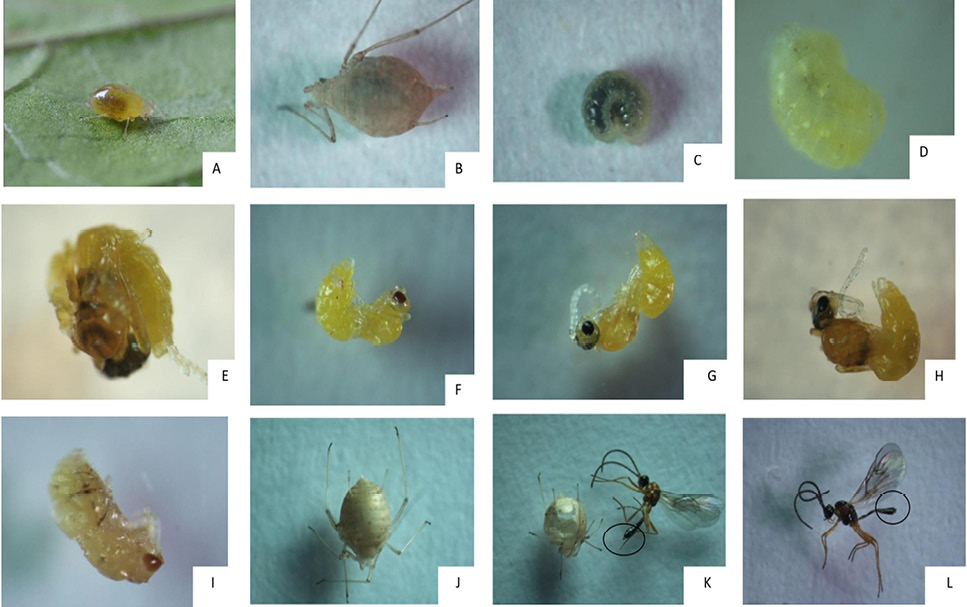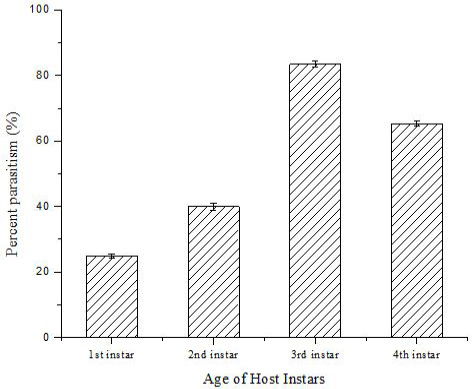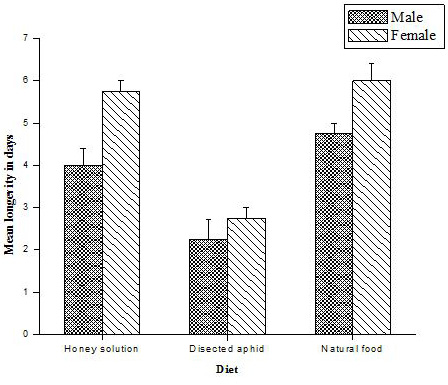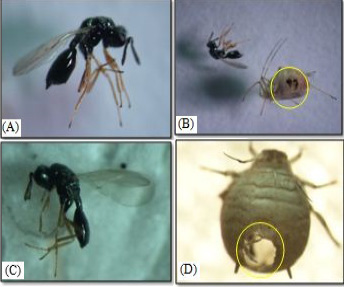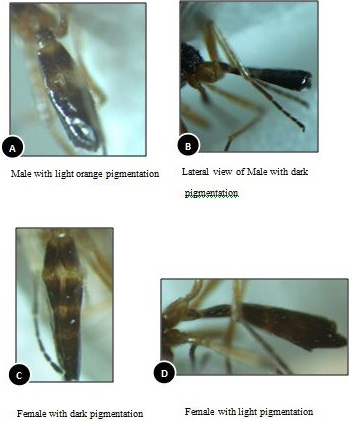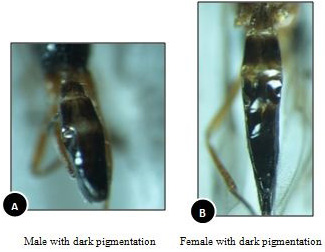Biological Parameters of Aphidius smithi Sharma and Subba Rao (Hymenoptera: Aphidiinae), A Parasite of the Pea Aphid, Acyrthosiphon pisum (Homoptera: Aphididae) Under Laboratory Conditions
Biological Parameters of Aphidius smithi Sharma and Subba Rao (Hymenoptera: Aphidiinae), A Parasite of the Pea Aphid, Acyrthosiphon pisum (Homoptera: Aphididae) Under Laboratory Conditions
Tasleem Akhtar1*, Muhammad Farooq Nasir2, Imran Bodlah2 and Muhammad Adnan Bodlah3
Life cycle of Aphidius smithi on Acyrthosiphon pisum; parasitized aphid (A), mummified aphid (B), newly hatched (C), later stage (D), 4th days old larvae (E), 5th days old larvae (F), 6th days old larvae (G), 8th day pre pupae stage (H) and on 9th changed into pupae (I). fully developed mummy (J), pupae changed into adult female at 11 days and emerged from host on the same day (K), male adult parasitoids (L).
Comparison of different aphid parasitized by A. smithi female in relation to host age (mean values with SD, n=20).
Effect of different diet sources on adult longevity of Aphidius smithi (mean values with SD, n= 5).
Mummy coloration and position of emergence hole of hyperparasitoids with its respective species. Pachyneuron aphidis (A, B) and Asaphes suspensus (C, D).
Phenotypic polymorphism in field population of Aphidius smithi.
Phenotypic polymorphism in laboratory reared population of Aphidius smithi.







